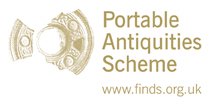Server check!
You are on the training database
Awl
Awls are difficult to date but most are probably from the Late Bronze Age. They can have circular or square cross sections and are generally undecorated. They would have been used to make holes in leather or wood and probably were inserted into a handle made from organic materials. Awls were a range of rod-like tools that were usually round sectioned and pointed at one end, and rectangular sectioned with a square or chiselled edge at the other (Rowlands 1976 48). 'Awl' is often used to refer to any number of small, pointed instruments. Referred to as "pointed punches" by Coles (1963-64 117). They were presumably used for perforating leather, but it was once suggested that they were used for tattooing human skin.
Dating and areas of discovery
Date: most probably 1250-800 BC
Distribution: All over Britain and Ireland
Examples
Awl BERK-A89238

Awl
WILT-AD88E3

References
- Coles, J M (1964) 'Scottish Middle Bronze Age Metalwork', Proc Soc Antiq Scot, 97 (1963-4)
- Rowlands, M.J. (1976) 'The Production and Distribution of Metalwork in the Middle Bronze Age in Southern Britain: Part ii'. Oxford: British Archaeological Reports.


